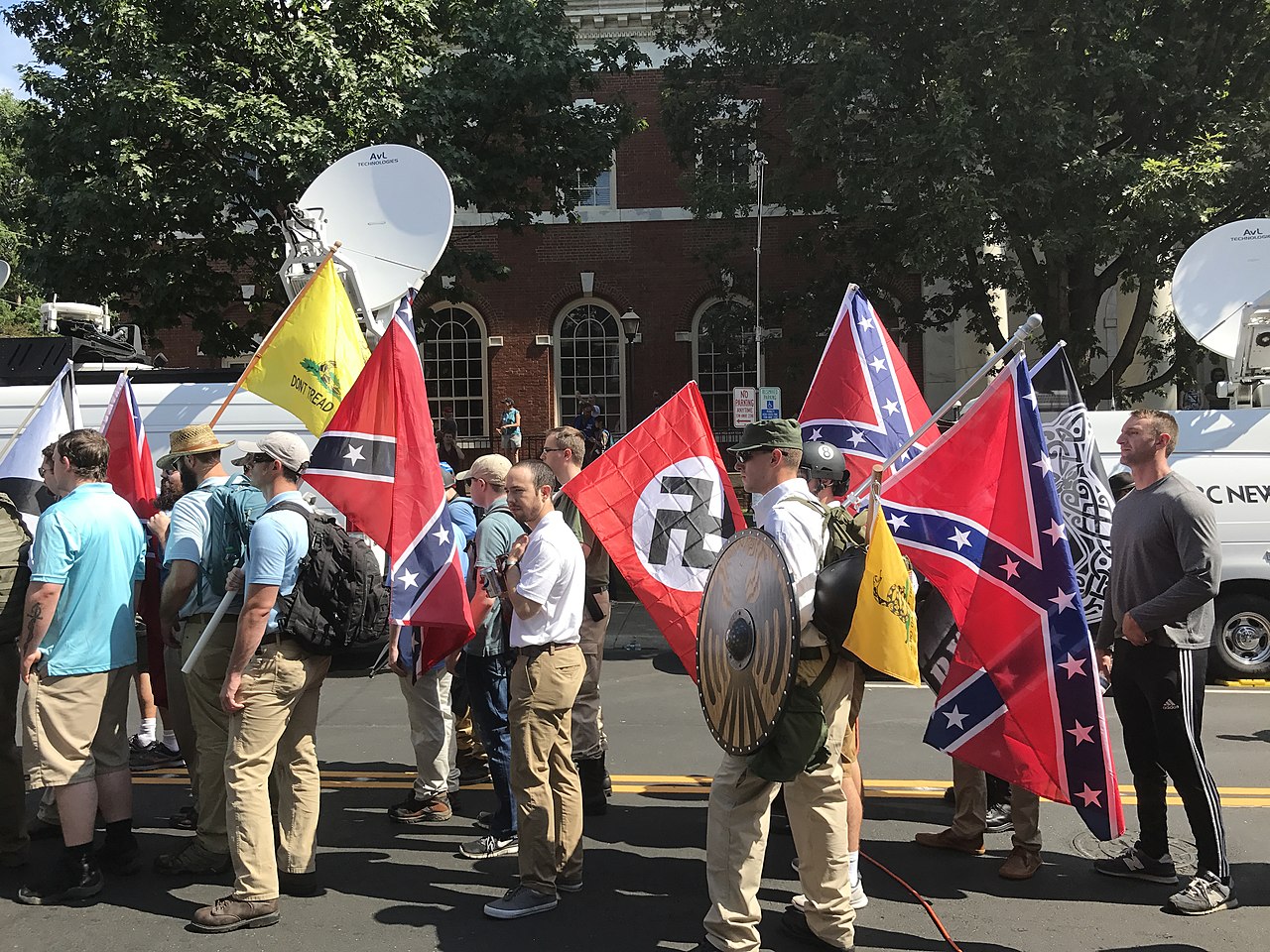What Extremism Means to the Federal Government
Federal officials must navigate challenges when developing policies on extremism.

Published by The Lawfare Institute
in Cooperation With

The federal government lacks a public definition of “extremism.” But the Justice Department uses the term “violent extremism” to categorize various terrorism threats, and the Defense Department prohibits service members from active participation in so-called extremist activities. In both examples, the government uses modifiers to restrict the meaning of “extremism” or “extremist” in a specific context. In this respect, “violent” and “activities” serve similar functions. Distinctions in how the terms operate in practice, however, speak to the challenges of defining extremism and developing extremism-related policies within the federal government.
Neither Congress nor the executive branch has an official definition of extremism, but the Oxford English Dictionary defines the term as “the holding of extreme political or religious views.” That in turn requires a definition of “extreme” views, which is often left up to interpretation.
These definitions raise important considerations. First, extremism does not require conduct. An extremist might believe that violence is justified for political ends. But seeking those ends, whether through violence or otherwise unlawful conduct, is not what makes them extremists. Second, the term “extremism” is relative, if not normative. An allegation of extremism requires the definition of the norm and the assertion that someone’s views deviate from the norm.
In this respect, “extremism” is fickler than even “terrorism,” which the Oxford English Dictionary defines as “the unlawful use of violence and intimidation, especially against civilians, in the pursuit of political aims.” Each term’s definition involves politics. But the similarities end there. For one, terrorism requires conduct. To be a terrorist, one must act. To be an extremist, however, one need only think. Furthermore, terrorism is unlawful. Therefore, even when extremism crosses the line from belief into expression or conduct, it may still be distinct from terrorism. For example, white supremacist hate speech or a neo-Nazi march may be labeled as extremist, but neither is necessarily illegal.
These considerations make it challenging to develop federal definitions of extremism and extremism-related policies. The federal government cannot set the parameters for acceptable public discourse, nor should it. This makes defining extremism a sensitive task, which in turn makes it hard to develop responsive policies. Moreover, to the extent that extremism involves conduct, speech, or beliefs protected under the First Amendment, the federal government generally lacks power to criminalize or regulate extremism.
In the few instances in which the government has come close to defining or developing policies on extremism, these constraints are made apparent. The Justice Department, for example, uses the term “violent extremism” to categorize different terrorist threats. In this context, violent extremism is “the potentially unlawful use or threat of force or violence” to advance an ideological agenda. Among the Justice Department’s terrorism classifications, for example, are racially motivated violent extremism, anarchist violent extremism and abortion-related violent extremism.
Additionally, the Pentagon has published guidance prohibiting service members from active participation in so-called extremist activities, which include “[a]dvocating … unlawful force or violence to achieve [ideological] goals” and “[a]dvocating widespread unlawful discrimination based on” protected characteristics.
In both examples, the government adds modifiers that not only restrict the meaning of extremism but also provide a basis for the government to get involved. The Justice Department cannot investigate or prosecute extremism, but it does have jurisdiction over certain forms of violence, including terrorism. And though the Defense Department must respect the First Amendment rights of service members, it can regulate activities that threaten morale, reduce readiness or erode public trust.
Despite these similarities, there are important distinctions between the Justice Department’s use of “violent extremism” and the Defense Department’s use of “extremist activities.”
The first is context—in particular, the scope of government power within that context. In a civilian context, the federal government generally cannot prohibit activities protected under the First Amendment. But according to the Supreme Court, “the different character of the military community and the military mission requires a different application of [First Amendment] protections”—and one more deferential to the government.
This explains why FBI Director Christopher Wray has stressed in multiple congressional hearings that “we, the FBI, don’t investigate ideology, no matter how repugnant. We investigate violence.” Likewise, the Biden administration has explained that it uses “violent extremism” instead of “extremism” to categorize terrorism threats “because mere advocacy of political or social positions, use of strong rhetoric, or generalized philosophic embrace of violent tactics … may be constitutionally protected.” Inherent in the administration’s statement is a concession that, in a civilian context, the government generally cannot investigate, prosecute or otherwise prohibit extremism.
But advocating violence and supporting unlawful conduct are precisely the kinds of “extremist activities” that are prohibited among service members. According to the Defense Department, “[e]xtremist activities are inconsistent with the responsibilities and obligations of military service, as well as the oaths of office and enlistment, and can be prohibited even in some circumstances in which such activities would be constitutionally protected in a civilian setting.” In short, the federal government has more power to regulate extremism among service members than within the civilian population. But even then, the government must draw lines between mere belief, for example, and conduct or expression.
The second distinction is in how the government addresses extremism in the justice system and the military.
Just because “violent” and “activities” serve similar functions by providing a basis for the government to get involved, it does not mean that the government’s orientation toward extremism in each context is the same. Perhaps the government uses “extremism” or “extremist” for no reason other than to describe the particular forms of violence and activities that it’s concerned about. Or perhaps the government’s principal focus is monitoring or preventing extremism—including the protected kind—and the modifiers serve as a constitutional stalking horse.
Despite the FBI’s track record of domestic spying, the Justice Department is likely not using “violence” to get at extremism but, rather, is using “extremism” to categorize violence. In contrast, it’s reasonable to assume the opposite is true when it comes to the Defense Department’s use of “extremist activities.” If the government’s leading concerns in this context are morale and combat readiness—and official guidance suggests they are—then extremism itself, and not just participation in so-called extremist activities, appears to pose a threat. After all, even if service members do not act on their white supremacist beliefs by advocating racial violence, those beliefs could nevertheless inspire actions that could have less explicit, though equally serious, consequences for unit cohesion and the broader mission.
In short, it’s plausible that the Defense Department uses “activities” to get at extremism, which is different from the Justice Department’s use of “extremism” to categorize violence. Indeed, this dynamic can be seen at work in the Defense Department’s treatment of membership in extremist groups. The Pentagon’s official guidance falls short of prohibiting membership in the Ku Klux Klan, the Oath Keepers, and the like, but as the Defense Department has noted, the various restrictions on participation in extremist activities all but prevent membership in practice, if not in text.
These two examples demonstrate both the challenges and the constraints that federal officials must navigate when developing policies on extremism. And defining the term remains difficult. Unless braced with modifiers, “extremism” is a vague, malleable word, surpassing even the entanglements of “terrorism.” This pliability might be useful to the federal government—or it might cause confusion. After all, and as mentioned above, federal officials have repeatedly emphasized before Congress that, when it comes to violent extremism, the focus is violence, not extremism. But if members of Congress needed clarification, who could blame them?





